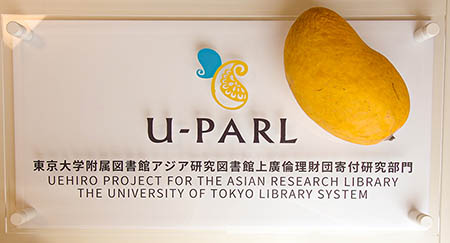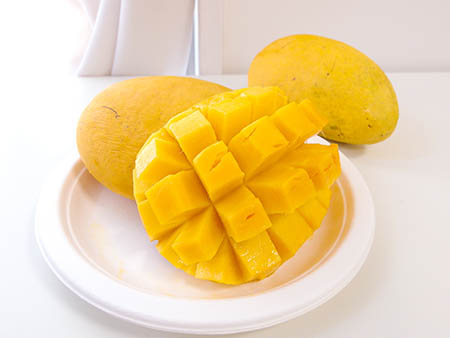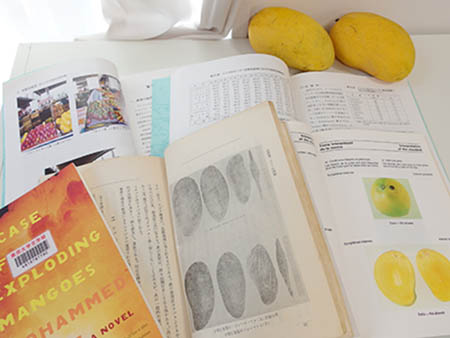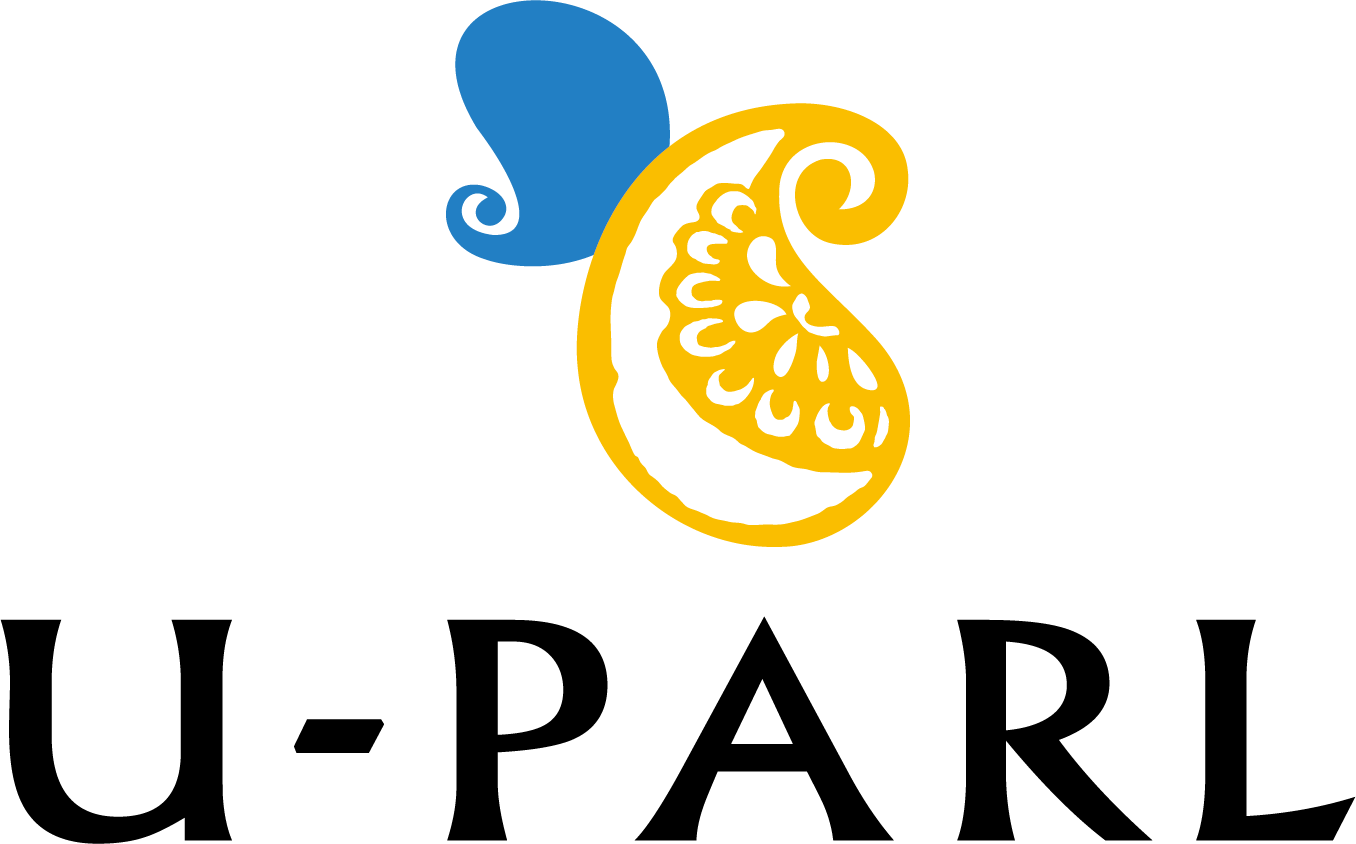Emiko SUNAGA (Project Research Fellow)
Have you ever seen the U-PARL logo? Three elements, a mango, a magatama (a comma-shaped bead), and the paisley pattern, come together to form a single motif. Mango pieces have recently become a common sight in desserts at convenience stores in Japan, but compared to mandarin oranges, and apples, mangoes still have the image of being a rare luxury fruit here. This article talks about the Pakistani mango, which, locals contend, is among the best varieties in Asia and even in the whole world.

The Pakistani King of Fruits, Mango
In the South Asian country of Pakistan, mangoes are widely loved by the people and known as the ‘King of Fruits.’ Mangoes are in season from May to September, but the peak hits in May and June. It is during those hot months when countless stalls line the streets. Mangoes are sometimes made into pickles or chutneys but are best eaten raw. The varieties available change with the seasons, but you get the greatest enjoyment in the hot summer when they help quench your thirst. More than 150 varieties are grown in Pakistan, the main ones being 1) the large, oval-shaped Sindhri, 2) the Chaunsa, which is exported worldwide, 3) the small, thin-skinned Anwar Ratol, 4) the green, fragrant Langra and 5) the pale-skinned Fazli. Local prices range from 20 to 80 yen each and mangoes are sold by the kilo. Pakistanis have a tremendous passion for mangoes and will easily tell you their recommended brands and where they come from.
Pakistani mangoes are rich in fibre, but what sets them apart from mangoes from other regions is their ever-high sugar content. It can go up to 21-24 percent. For comparison, the sugar content of Japanese mangoes is said to be around 15 percent. The moment you put a Pakistani mango in your mouth, the intense sweetness will make you groan. You may even mistake it for a sweet rather than some fruit.
Mangoes could be a drink?
In Japan, Pakistani mangoes have been sold at Aeon and other stores since 2012. After you buy one, it is recommended to leave it at room temperature for 2 or 3 days. This will make the fruit aromatic and soft. After that, it is safe to store it in the refrigerator. It is ready to eat when the thick skin sags and becomes wrinkled.
In Japan, mangoes are usually eaten in diamond cuts as shown in the photo, but in Pakistan, mangoes are usually cut into long, thin strips with the skin still on (photo: mail-ordered Chaunsa mango from Washin Trading Co. Ltd.). Another common way to eat a mango is to rub it thoroughly with both hands, cut off the heft and chew or suck on it. Naturally, the thick juice will overflow, making both your hands and mouth gooey.

Mangoes and books
The University of Tokyo Library has a wide range of books on mangoes. Here are some of them.
Top left: A report on production and distribution of mangoes in Brazil, with references to local food culture, highlighting that “in São Paulo, mangoes are often eaten at lunchtime, while in other state capitals they are often eaten outside of meals” (p. 12) (Japan Fruit Foundation. (2003). Report on the production and distribution of mangoes in Brazil. Tokyo: Japan Fruit Foundation, p. 1).
Top right: A report on mangoes in India, stating that India is the world’s largest producer and grower of mangoes, accounting for “43.3% of the world’s total production” (p. 24). It also suggests that there are over 1,000 mango varieties (p. 67) (Japan Fruit Foundation. (2001). Report on the Production and Distribution of Mangoes in India. Tokyo: Japan Fruit Foundation, p. 58-59).
Bottom-left: A novel based on the incident in which Pakistani President General Muhammad Zia-ul-Haq (in office 1977-1988) was killed in a plane crash. It is said that a bomb was planted inside a gift crate of mangoes. (Mohammed Hanif. (2009). A Case of Exploding Mangoes. New York: Vintage Books).
Bottom-centre: A report by the Governor-General of Taiwan on mango production in the country. The original report was published in 1911, and this book is the second edition, with a new improved list of mango varieties and some additional information. (Secretariat of the Governor-General of Taiwan, Research Section. (1926). Mangoes. Taipei: Secretariat of the Governor-General of Taiwan, Research Section, p. 32)
Bottom-right: A booklet published in France to review international standards for fruits and vegetables by the Organisation for Economic Co-operation and Development. In addition to mangoes, entries on other fruits and vegetables, like kiwis, apricots, avocados, and lettuce, have been published. (Organisation for Economic Co-operation and Development. (1993). Mangues=Mangoes. Paris: Organisation for Economic Co-operation and Development p. 19).

Mangoes are also mentioned in Ibn Battuta’s travelogue, and there is even a poem in praise of the mango composed by Mirza Ghalib, one of India’s most famous poets. Eating a mango while reading certainly sounds nice but we have to advise you against it unless you don’t mind spilling the juice over your precious books. Let’s enjoy each at their own pace.
March 14, 2024

